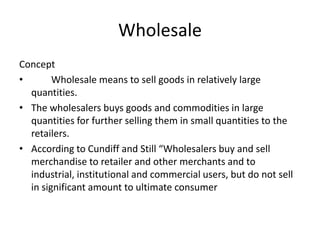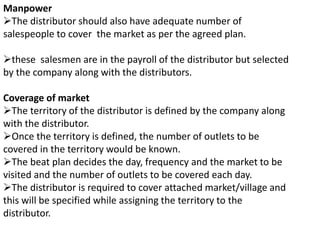Wholesalers purchase goods in bulk from manufacturers and sell in smaller quantities to retailers. They bridge the gap between producers and retailers. Key functions include buying and storing goods, distributing to retailers, providing financial assistance to retailers, and gathering market information. Performance is evaluated based on metrics like achieving sales targets, secondary sales, stock levels, handling promotions, and timely reporting. Developing rural markets involves expanding outlet coverage, acquiring new accounts, tracking secondary sales, monitoring competition, and managing damaged goods.




























